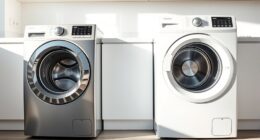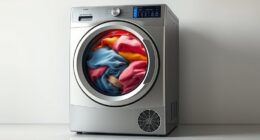In today’s society, with a growing emphasis on energy efficiency, it is essential to comprehend how our electrical devices affect energy usage.
The question often arises: Does an electrical appliance plugged in use electricity, even when not in use? This inquiry delves into the concept of phantom power and standby power, shedding light on the truth behind the energy consumption of idle appliances.
Through this exploration, we aim to uncover the hidden culprits known as energy vampires and the environmental consequences of phantom power.
Moreover, we will provide practical tips and smart solutions to minimize energy waste and take control of our appliance power consumption.
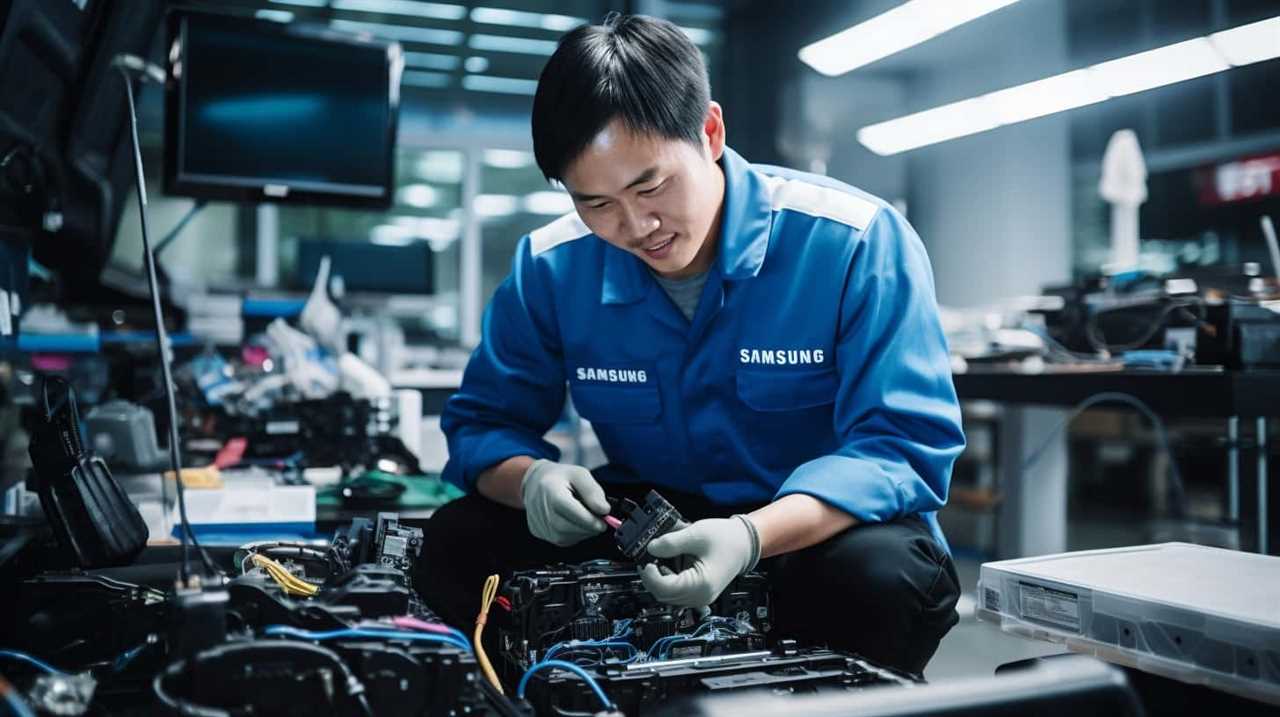
Join us as we navigate this topic with a desire for mastery and a commitment to energy efficiency.
Key Takeaways
- Electrical appliances can draw electricity even when not actively in use, contributing to phantom power, standby power, and idle energy consumption.
- Strategies to mitigate these types of power consumption include unplugging appliances when not in use, using power strips or smart plugs with on/off switches, and adjusting power management settings on electronic devices.
- Seemingly insignificant amounts of standby power or idle energy consumption can accumulate and impact overall energy consumption, debunking the misconception that appliances consume no energy when turned off.
- Utilizing advanced power strips, unplugging appliances when not in use, and monitoring electricity consumption can lead to substantial energy savings and a noticeable reduction in electricity bills.
Understanding Phantom Power
Phantom power is a phenomenon in which electrical appliances continue to draw a small amount of electricity even when they are plugged in but not in use. This hidden electricity usage can contribute significantly to overall energy consumption in households and commercial buildings.
To address this issue and provide energy saving tips, it is crucial to understand how phantom power works.
Electrical appliances, such as televisions, computers, and chargers, often have standby modes or power-saving features that allow them to turn on quickly when needed. However, even in these modes, these devices still consume a small amount of electricity to power indicators, clocks, or remote control sensors. While individually the power consumed may seem insignificant, the accumulation of these phantom loads can lead to substantial energy wastage.

To mitigate this hidden electricity usage, individuals can employ various strategies. One approach is to unplug appliances when not in use, especially those that are rarely used. Alternatively, power strips or smart plugs with on/off switches can be utilized to easily cut off power supply to multiple devices simultaneously.
Energy-saving habits, coupled with the use of advanced power management solutions, can significantly reduce phantom power consumption and promote energy efficiency.
What Is Standby Power
Standby power, also known as idle energy consumption or phantom power usage, refers to the electricity consumed by electrical appliances when they are not actively in use but remain plugged into a power source.
This can occur due to various factors such as electronic displays, remote control receivers, or devices that are in a standby mode waiting to be activated.
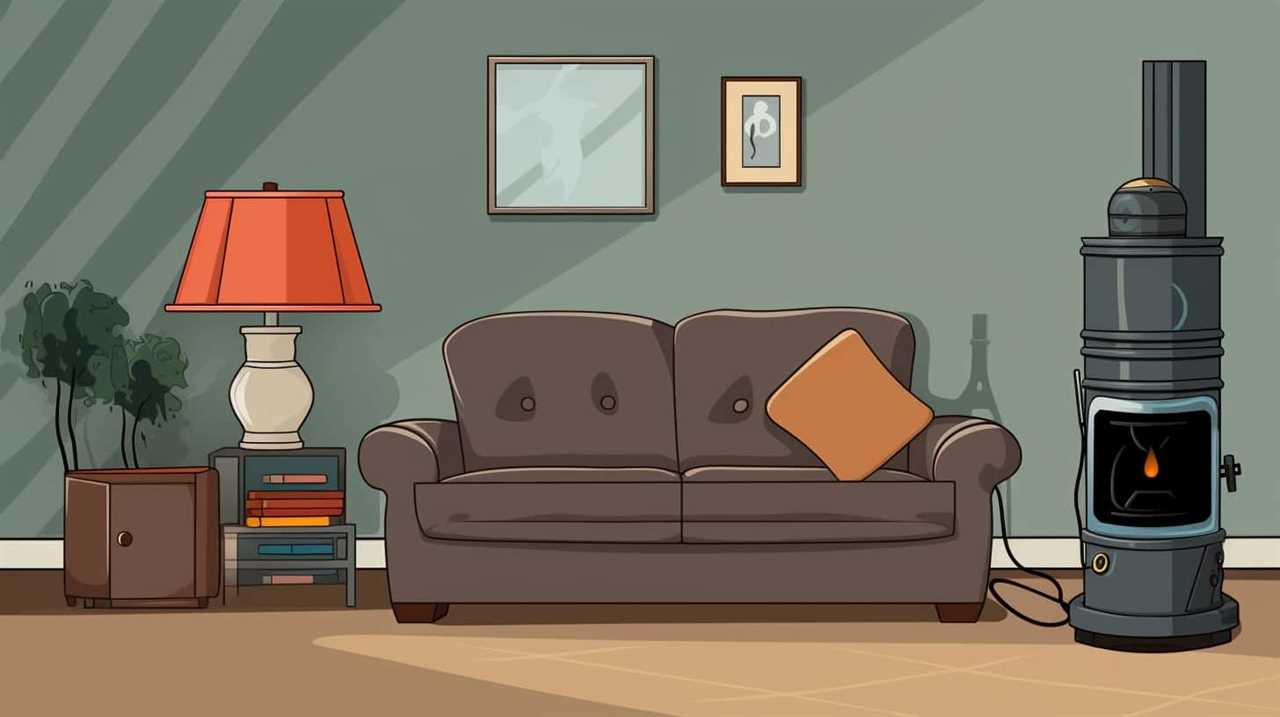
Understanding and minimizing standby power is crucial in reducing energy waste and improving energy efficiency in households and businesses.
Idle Energy Consumption
Electrical appliances that are plugged in but not in use still consume electricity. This phenomenon, known as idle energy consumption or standby power, occurs when devices remain in a standby mode or are in a dormant state.
Standby power can account for a significant portion of a household’s energy usage, leading to unnecessary energy waste and increased electricity bills. To reduce idle power consumption, it is essential to follow energy-saving tips such as unplugging appliances when not in use, using power strips with on/off switches, and opting for energy-efficient devices.
Additionally, adjusting power management settings on electronic devices can help minimize standby power. By being mindful of idle energy consumption and implementing strategies to reduce it, individuals can contribute to energy conservation efforts and save on electricity costs.

Phantom Power Usage
Idle energy consumption, also known as standby power, is the phenomenon in which electrical appliances that are plugged in but not in use continue to consume electricity. This hidden power consumption can account for a significant portion of a household’s energy usage, leading to unnecessary energy waste and higher utility bills.
To address this issue, energy saving techniques can be employed to reduce standby power and improve energy efficiency. One effective strategy is to unplug appliances when they are not in use or utilize power strips with an on/off switch to easily cut off power supply. Additionally, investing in energy-efficient appliances and using smart power management features can further minimize phantom power usage.
By being aware of this silent energy drain and implementing energy-saving measures, individuals can reduce their environmental impact and save money on their electricity bills.
Moving on to the next section, it is important to debunk the myth of off equals no energy consumption.

The Myth of Off Equals No Energy Consumption
Energy consumption is not eliminated when electrical appliances are turned off. Despite the common misconception that appliances consume no energy when not in use, they can still draw power even when seemingly switched off. This phenomenon, known as standby power or vampire power, occurs due to various factors such as standby modes, clock displays, and remote control receivers.
To debunk the myths about energy conservation surrounding this topic, consider the following points:
- Standby power accounts for a significant portion of residential energy consumption, wasting both energy and money.
- Even seemingly insignificant amounts of standby power can accumulate, making a noticeable impact on overall energy consumption.
The Truth About Idle Appliances
Despite common misconceptions regarding the energy consumption of idle appliances, it is important to understand the true impact they can have on overall electricity usage. The truth about wasted energy and hidden electrical costs lies in the idle appliances that continue to draw power even when not in use.
These appliances, although seemingly inactive, are still connected to a power source and may consume electricity in the form of standby power or vampire power. Standby power refers to the energy consumed by appliances in standby mode, waiting to be activated, while vampire power refers to the electricity used by appliances that are plugged in but not actively turned on.

These seemingly innocent idle appliances can contribute significantly to household energy bills if left unchecked. It is crucial to be aware of this hidden cost and take necessary measures to reduce standby and vampire power consumption.
Uncovering the Energy Vampires
When an electrical appliance is plugged in, it inevitably consumes electricity, even when not actively in use. These energy vampires silently drain power from our homes, resulting in hidden electricity costs that can add up significantly over time. To uncover these silent culprits, it is important to be aware of their presence and take proactive measures to minimize their impact.
Here are two strategies to save energy and reduce hidden electricity costs:
- Utilize advanced power strips:
- These power strips are equipped with features such as timers or motion sensors that automatically cut off power to appliances when they are not in use.
- By using advanced power strips, you can easily eliminate the standby power consumption of idle appliances and reduce energy wastage.
- Unplug appliances when not in use:
- Simply unplugging appliances when they are not being used can prevent energy vampires from consuming unnecessary electricity.
- This simple habit can lead to substantial energy savings and a noticeable reduction in your electricity bills.
How to Identify Phantom Power Users
To effectively identify phantom power users, it is necessary to understand the subtle ways in which electrical appliances continue to draw power even when not actively in use. Identifying power hoggers requires a meticulous approach and a keen eye for detail.

One way to identify these energy vampires is by using a power meter or an energy monitoring device. By connecting the appliance to the meter, you can measure the amount of electricity it consumes even when it is supposedly turned off.
Another strategy is to look for devices with standby modes or continuous displays. These devices, such as televisions, routers, and gaming consoles, often consume power even when not in use.
The Impact on Your Energy Bill
The consumption of electricity by plugged-in electrical appliances has a direct impact on your energy bill. Understanding this impact can help you make informed decisions about energy usage and potentially save money. Here are some key points to consider:
- Energy efficient appliances: Investing in energy-efficient appliances can significantly lower your energy consumption and reduce your bill. Look for appliances with ENERGY STAR ratings, which indicate that they meet strict energy efficiency guidelines.
- Electricity consumption monitoring: Monitoring your electricity consumption can help you identify which appliances are using the most energy and adjust your usage accordingly. Smart meters and energy monitoring devices can provide real-time data to help you track and manage your energy consumption.
By considering these factors and making conscious choices, you can reduce your energy bill and contribute to a more sustainable future.

However, the impact of plugged-in electrical appliances goes beyond just your energy bill. Let’s now explore the environmental consequences of phantom power.
Environmental Consequences of Phantom Power
Phantom power usage from plugged-in electrical appliances can have significant environmental consequences. While it may seem inconsequential to leave devices on standby mode or in sleep mode, the energy consumed by these appliances adds up over time. This phenomenon, known as phantom power or standby power, contributes to unnecessary energy consumption and carbon emissions.
To illustrate the environmental impact of phantom power, consider the following table:
| Appliance | Standby Power Consumption (Watts) |
|---|---|
| Television | 5 |
| Computer | 2 |
| Gaming Console | 1 |
| DVD Player | 1 |
| Sound System | 3 |
Tips to Minimize Energy Waste
How can individuals minimize energy waste caused by plugged-in electrical appliances?
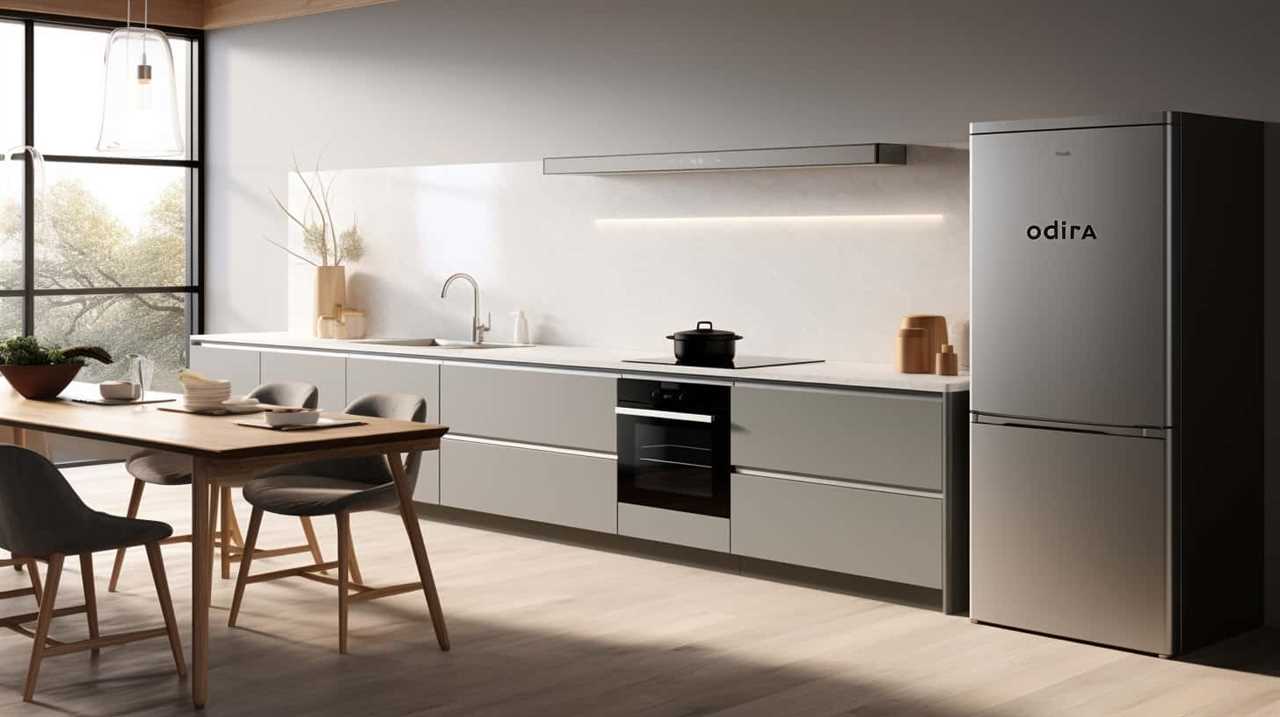
Here are some energy-saving techniques to help reduce electricity consumption:
- Unplug unused appliances: When appliances are not in use, unplug them from the power source to prevent standby power consumption.
- Utilize power strips: Connect multiple appliances to a power strip and switch it off when not in use. This eliminates standby power usage for multiple devices simultaneously.
- Emotion-evoking bullet points:
- By implementing these energy-saving techniques, individuals can significantly reduce their carbon footprint and contribute to a greener environment.
- Conserving energy not only helps to save money on utility bills but also promotes sustainability and preserves precious natural resources.
By following these simple tips, individuals can minimize energy waste and make a positive impact on the environment.
Let’s take responsibility for our energy consumption and move towards a more sustainable future.
Smart Solutions for Energy Efficiency
To further enhance energy efficiency and reduce electricity consumption, implementing smart solutions is essential.
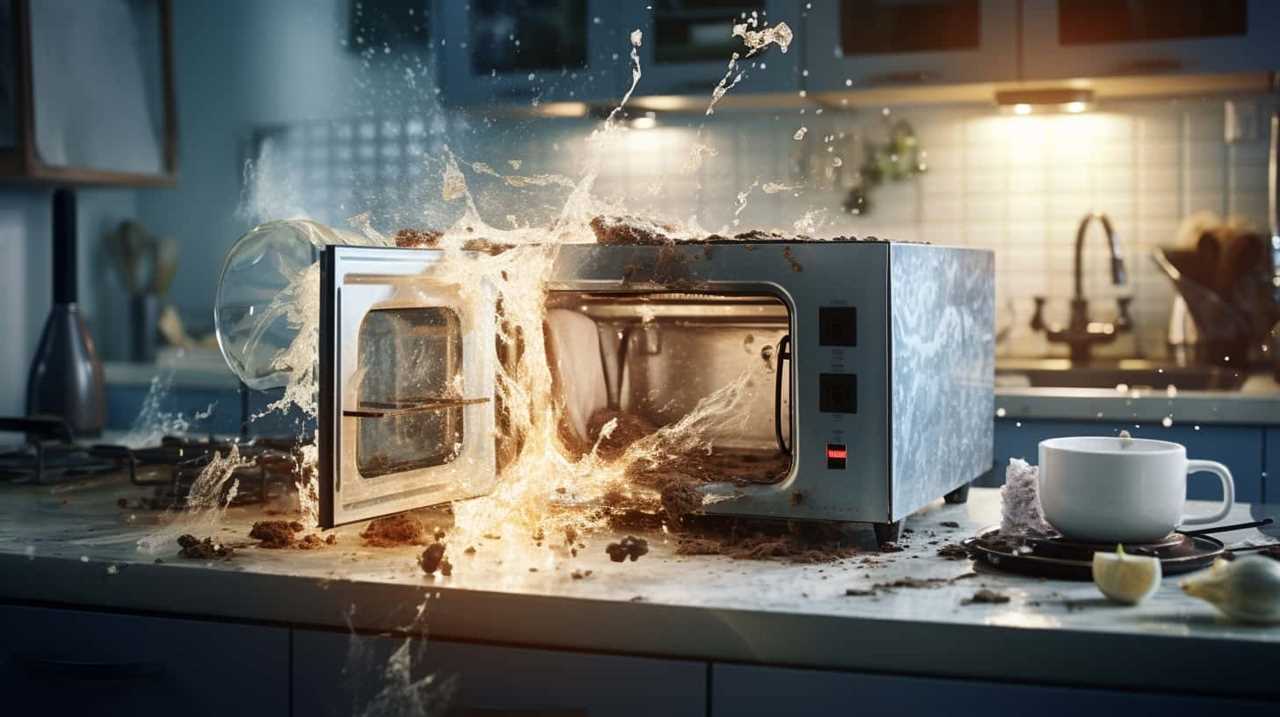
Smart home technologies offer innovative ways to optimize energy usage and promote sustainability. These technologies integrate advanced sensors, automation systems, and artificial intelligence to monitor and control energy consumption in households.
By analyzing patterns and usage data, smart devices can identify areas of energy waste and suggest energy-saving strategies. For example, smart thermostats can adjust temperature settings based on occupancy and weather conditions, resulting in significant energy savings.
Additionally, smart plugs and power strips can automatically detect when devices are not in use and cut off power supply, preventing standby power consumption.
These energy-saving solutions empower homeowners to take control of their appliance power consumption and contribute to a more sustainable future.
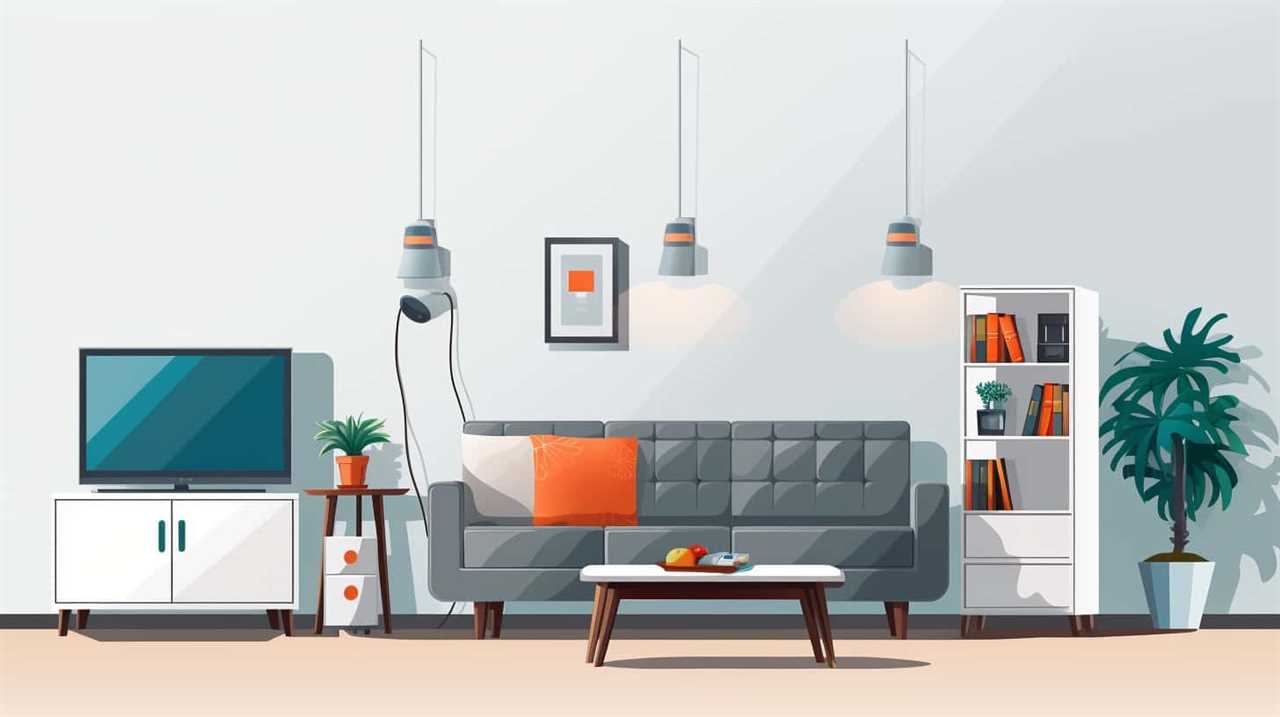
Taking Control of Your Appliance Power Consumption
Homeowners can effectively manage their appliance power consumption by utilizing smart technologies and implementing energy-saving strategies. By taking control of their appliance power management, homeowners can not only reduce their energy bills but also contribute to a more sustainable environment.
Here are some energy-saving techniques that can be employed:
- Utilize smart plugs and power strips: These devices allow users to remotely control the power supply to their appliances, ensuring that they are not consuming unnecessary electricity when not in use.
- Optimize appliance settings: Adjusting the temperature, brightness, or power modes on appliances such as refrigerators, air conditioners, and televisions can significantly reduce energy consumption.
- Implement energy management systems: These systems monitor and analyze appliance power usage, providing valuable insights for homeowners to make informed decisions regarding their energy consumption.
Frequently Asked Questions
How Can I Identify Which Appliances in My Home Are Using Phantom Power?
Identifying appliances using phantom power can be done by monitoring electricity usage with a smart meter or plug-in power meter. Common culprits include televisions, computers, game consoles, and chargers. Implementing energy-saving practices can reduce phantom power consumption.
What Are Some Smart Solutions or Technologies That Can Help Minimize Energy Waste From Electrical Appliances?
Energy efficient appliances and home automation systems are smart solutions that can help minimize energy waste from electrical appliances. These technologies optimize energy usage, allowing for more efficient operation and reducing overall electricity consumption.
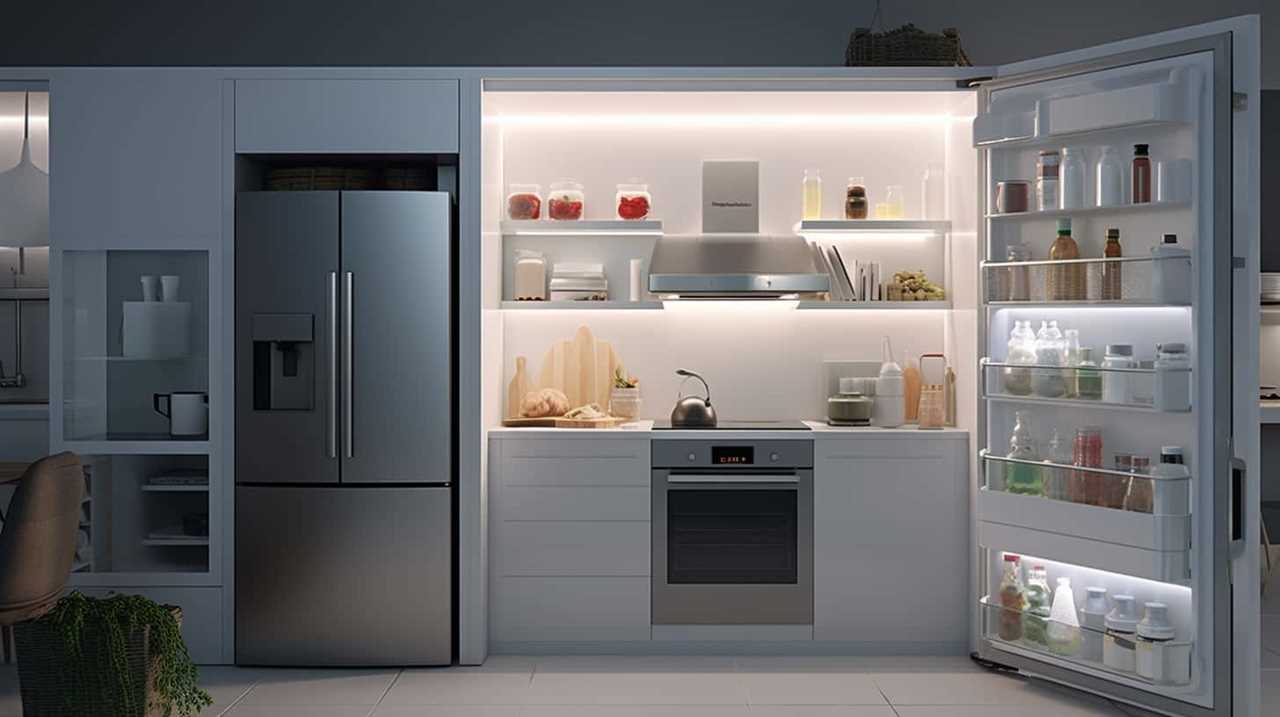
Are There Any Environmental Consequences Associated With Phantom Power Usage?
Environmental impact is a significant concern associated with phantom power usage. Energy efficient alternatives must be sought to mitigate the consequences. By addressing this issue, we can reduce electricity waste and lessen our carbon footprint.
Can Idle Appliances Significantly Impact My Energy Bill?
Idle appliances can have a significant impact on energy consumption, leading to higher energy bills. To reduce energy waste, strategies such as unplugging appliances, using power strips, and utilizing energy-efficient devices can be employed.
Is It Possible to Take Control of My Appliance Power Consumption Without Constantly Unplugging Them?
To efficiently manage appliance power consumption without constant unplugging, energy saving power strips and remote power management systems can be utilized. These technologies allow users to remotely control and monitor electricity usage, optimizing energy efficiency and reducing unnecessary electricity consumption.
Conclusion
In conclusion, the concept of phantom power and standby power highlights the hidden energy consumption of electrical appliances even when they are not in use.

This idle energy usage, also known as standby power, contributes to environmental consequences and energy waste.
By understanding and taking control of our appliance power consumption, we can minimize energy waste and reduce our environmental impact.
Let us be mindful of these energy vampires and adopt smart solutions for greater energy efficiency.








